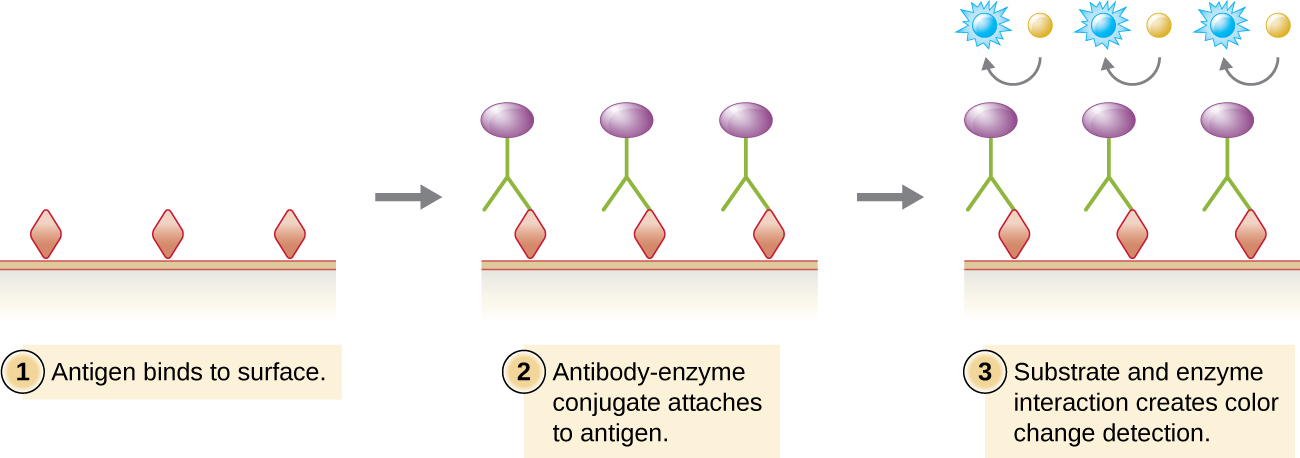| << Chapter < Page | Chapter >> Page > |
Similar to the western blot , enzyme immunoassays (EIAs) use antibodies to detect the presence of antigens. However, EIAs differ from western blots in that the assays are conducted in microtiter plates or in vivo rather than on an absorbent membrane. There are many different types of EIAs, but they all involve an antibody molecule whose constant region binds an enzyme, leaving the variable region free to bind its specific antigen. The addition of a substrate for the enzyme allows the antigen to be visualized or quantified ( [link] ).
In EIAs, the substrate for the enzyme is most often a chromogen, a colorless molecule that is converted into a colored end product. The most widely used enzymes are alkaline phosphatase and horseradish peroxidase for which appropriate substrates are readily available. In some EIAs, the substrate is a fluorogen , a nonfluorescent molecule that the enzyme converts into a fluorescent form. EIAs that utilize a fluorogen are called fluorescent enzyme immunoassays (FEIAs) . Fluorescence can be detected by either a fluorescence microscope or a spectrophotometer .

The MMR vaccine is a combination vaccine that provides protection against measles, mumps, and rubella (German measles). Most people receive the MMR vaccine as children and thus have antibodies against these diseases. However, for various reasons, even vaccinated individuals may become susceptible to these diseases again later in life. For example, some children may receive only one round of the MMR vaccine instead of the recommended two. In addition, the titer of protective antibodies in an individual’s body may begin to decline with age or as the result of some medical conditions.
To determine whether the titer of antibody in an individual’s bloodstream is sufficient to provide protection, an MMR titer test can be performed. The test is a simple immunoassay that can be done quickly with a blood sample. The results of the test will indicate whether the individual still has immunity or needs another dose of the MMR vaccine.
Submitting to an MMR titer is often a pre-employment requirement for healthcare workers, especially those who will frequently be in contact with young children or immunocompromised patients. Were a healthcare worker to become infected with measles, mumps, or rubella, the individual could easily pass these diseases on to susceptible patients, leading to an outbreak. Depending on the results of the MMR titer, healthcare workers might need to be revaccinated prior to beginning work.

Notification Switch
Would you like to follow the 'Microbiology' conversation and receive update notifications?